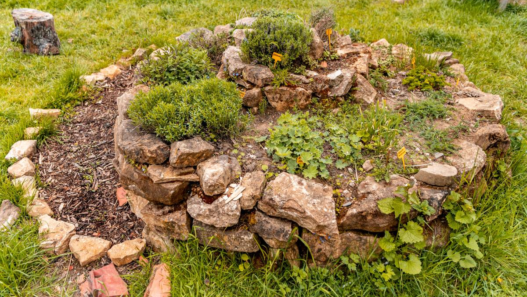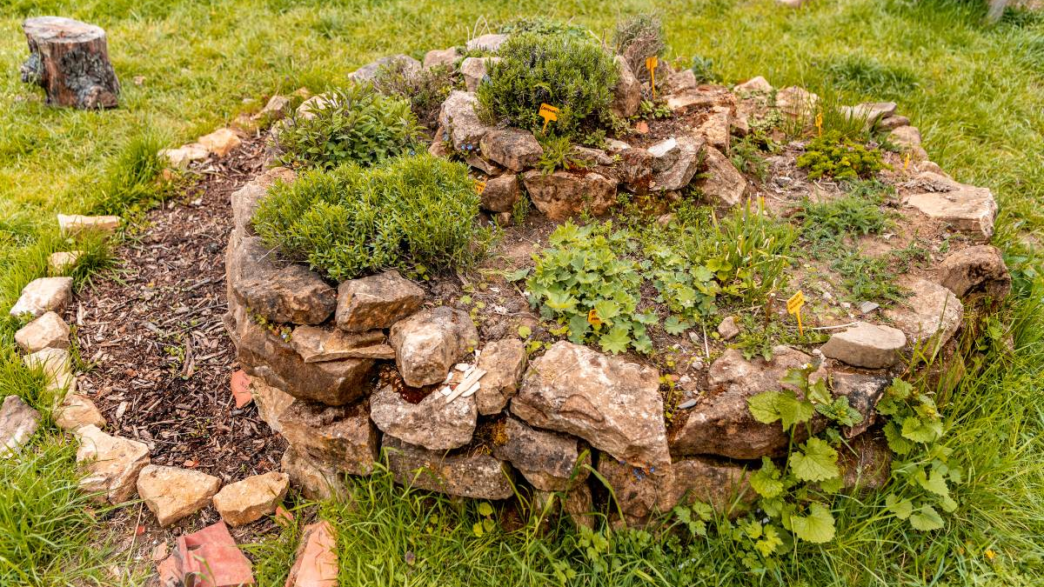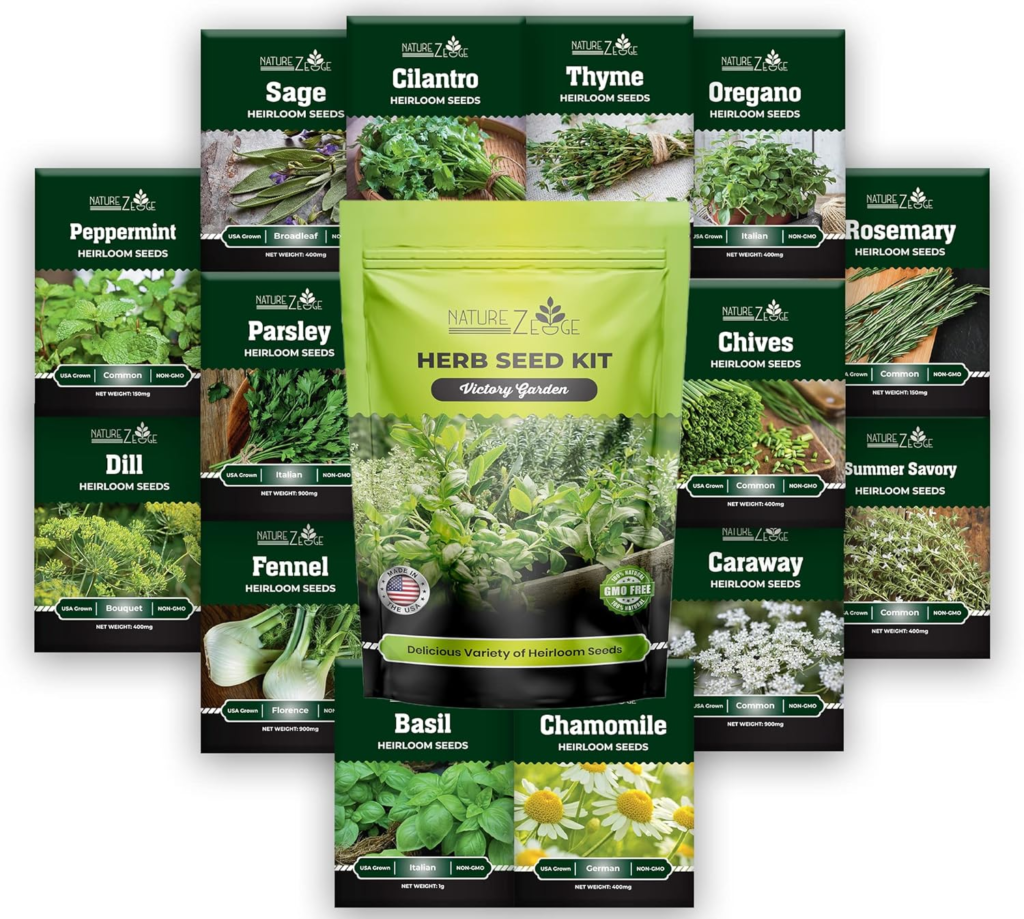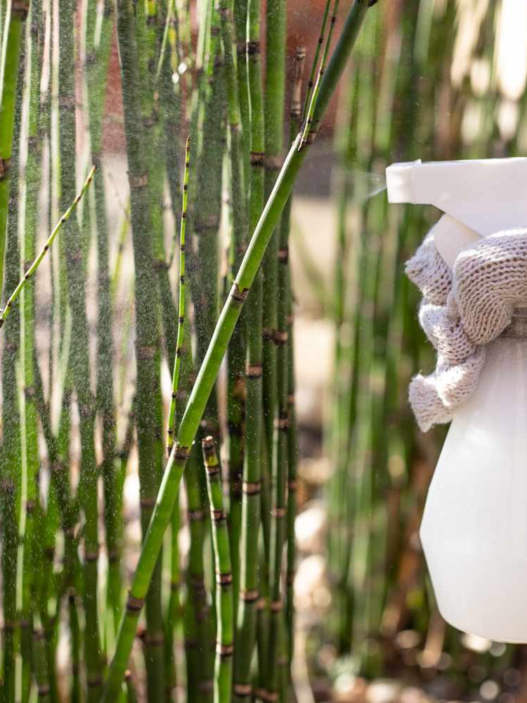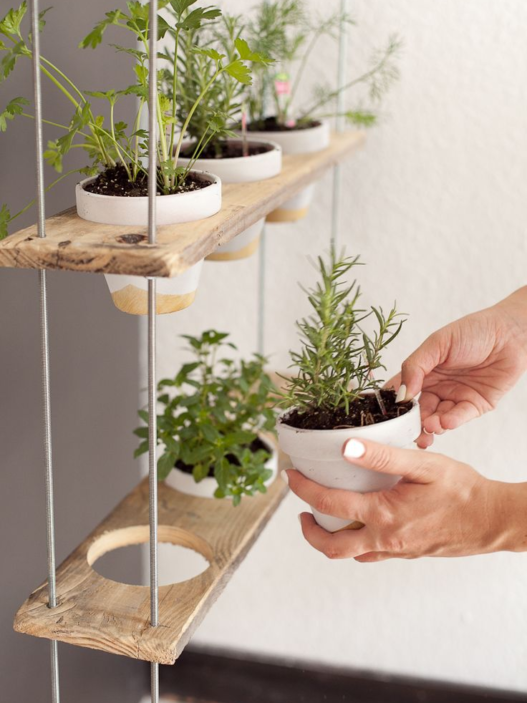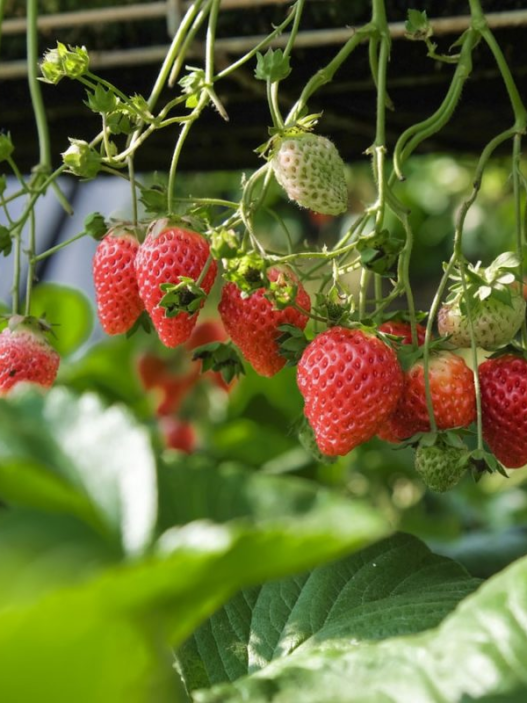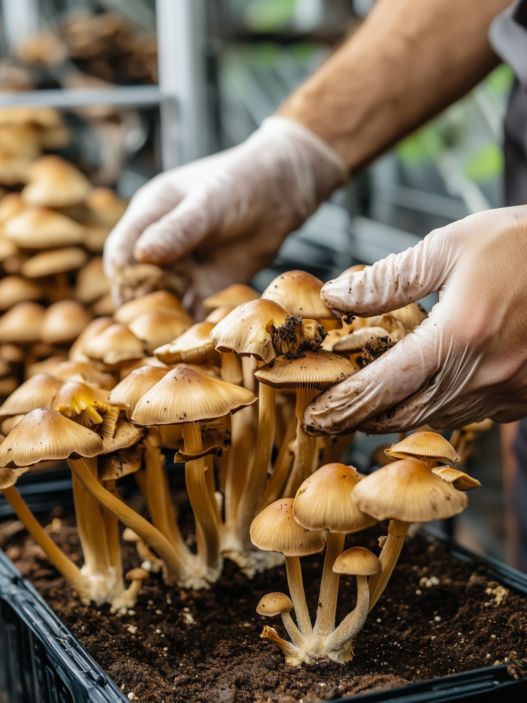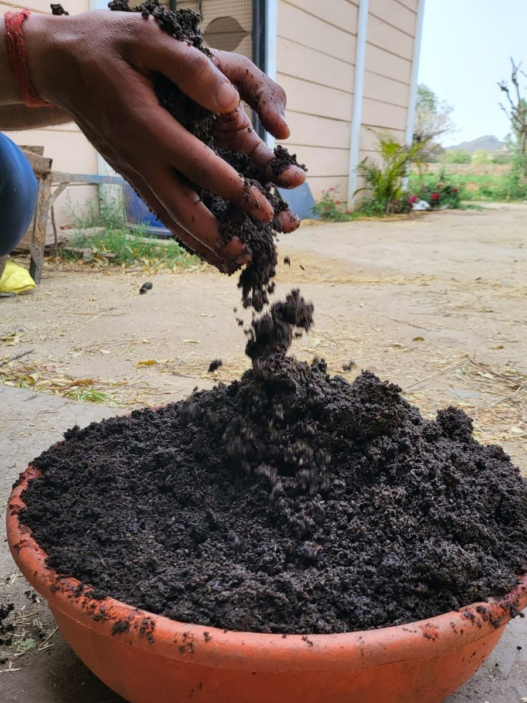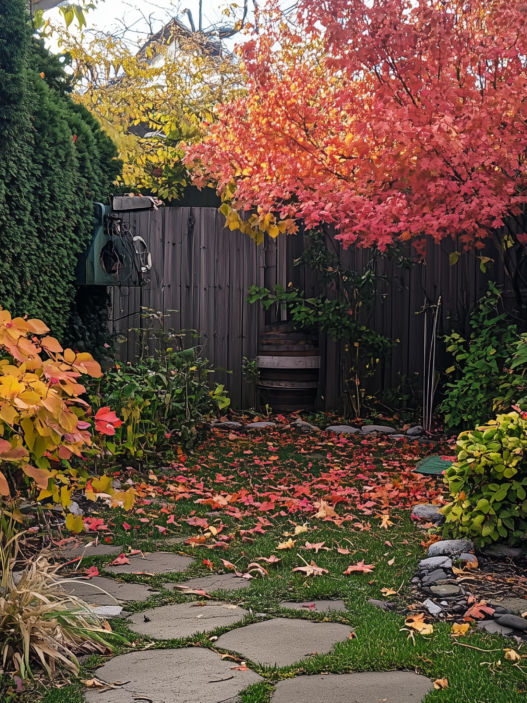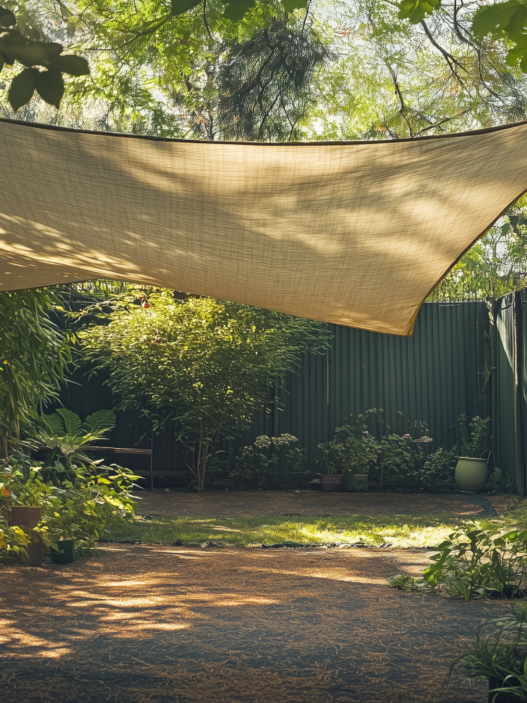I first encountered this concept about two years ago and I couldn’t take my eyes off it. While spiral gardens had always fascinated me, it was the one at the fair in Florida that truly captured my heart.
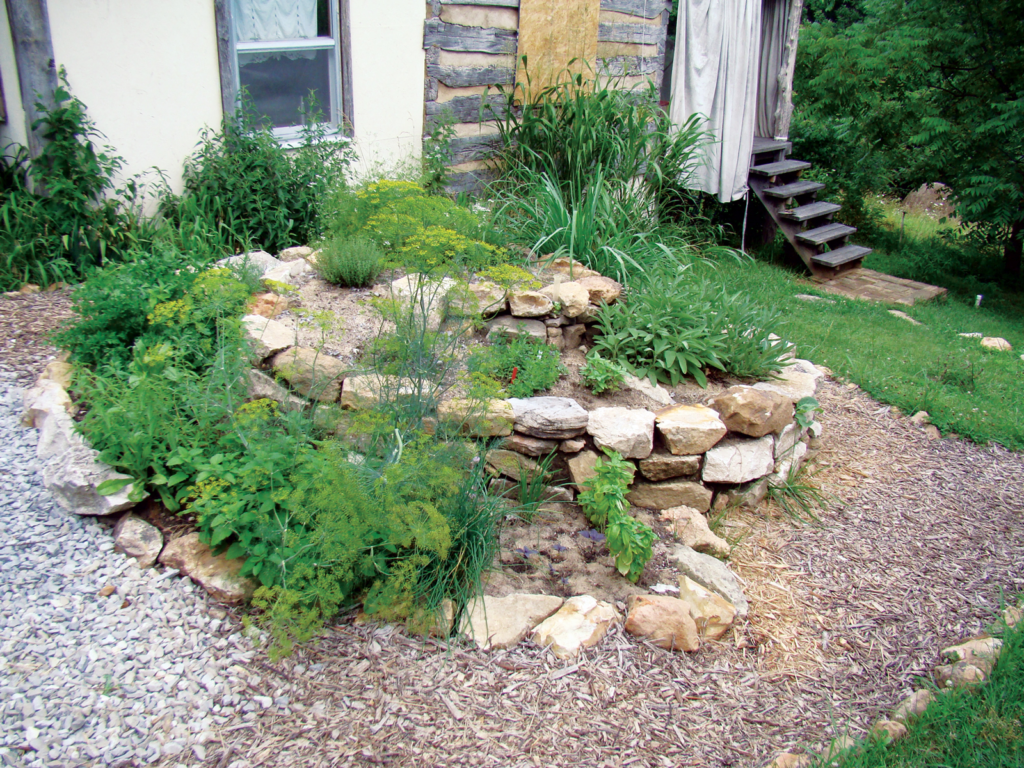
I decided that the following spring I would definitely try to create a similar project myself and share the results with you. Well, that day has come, so let’s dive into my experience. As always, my thoughts, results, and advice are all in this article.
What is a Permaculture Spiral Herb Garden?
A permaculture spiral herb garden is a method of organizing plants in a spiral shape. The benefits of this organization are obvious: we use vertical space as efficiently as possible (saving precious feet in our garden) and create different microclimates for various types of herbs. This method is popular in permaculture due to its simplicity and effectiveness.
6 Benefits of a Permaculture Spiral Herb Garden
I’ve always wanted to have rosemary, thyme, and basil in my garden. It turns out they can coexist perfectly in a spiral garden. Plus, I added a few other herbs on the advice of my neighbors.
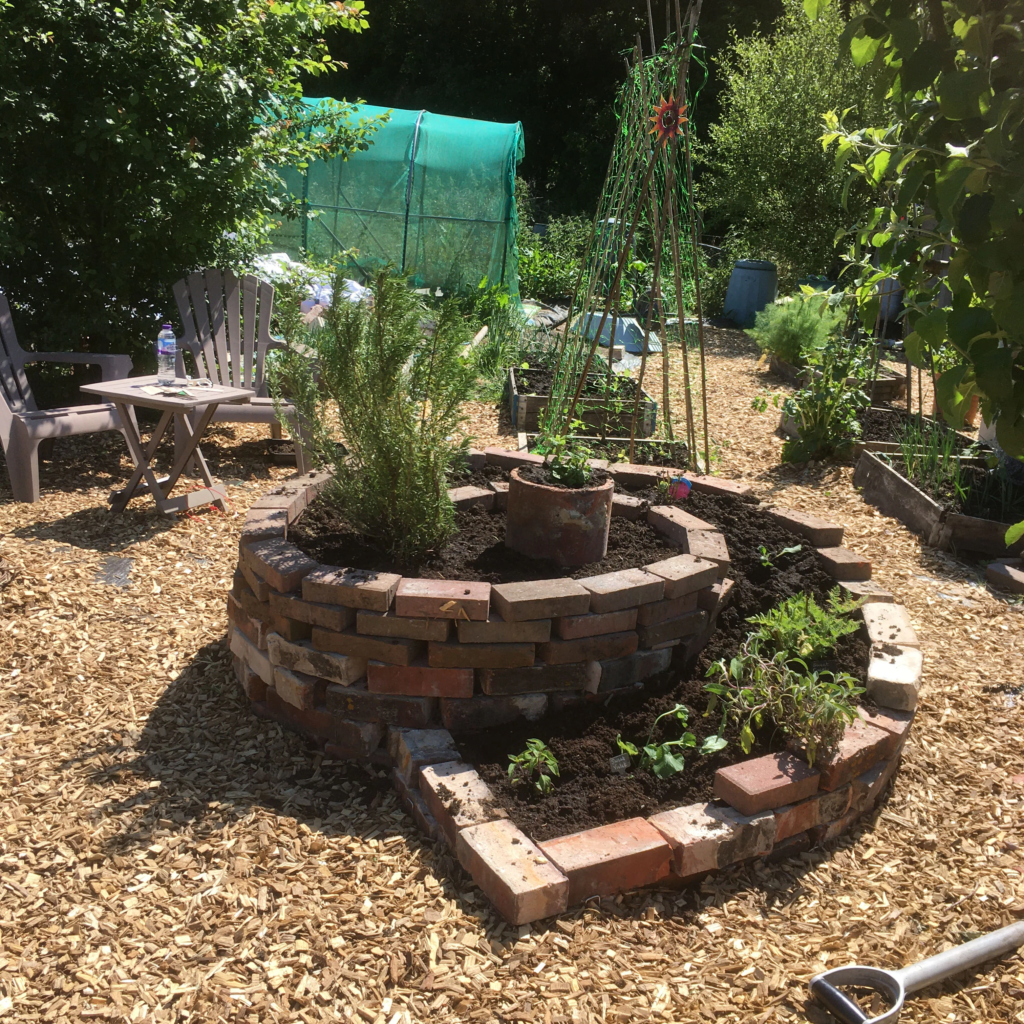
All the herbs I planted and tips on organizing the space for them are described in detail in the table below.
Returning to the benefits, in addition to being able to grow my favorite herbs, I also note the following:
- Efficient Space Utilization: The spiral design allows for more plants to be grown in a smaller area.
- Creating Microclimates: The top of the spiral gets more sunlight, while the lower layers remain more humid, creating ideal conditions for different types of herbs.
- Ease of Maintenance: All plants are easily accessible, making watering and care easier.
- Simplicity of Setup: A spiral garden can be created from readily available materials such as stones or bricks.
- Water Conservation: Water flows down the spiral, helping to conserve water for irrigation.
- Aesthetic Appeal: A spiral garden looks very attractive and becomes a true decoration of the garden.
A useful life hack: If you manage to plant a spiral garden near your kitchen windows, you can enjoy the wonderful aromas of herbs every day while cooking or washing dishes. By the way, I’m writing this material in the kitchen, and yes, I can smell the sweet scent of mint in the air right now. Isn’t that wonderful?
Secrets to Creating a Permaculture Spiral Herb Garden
For my readers on Rooted Revival, I try to break everything down into concrete steps, although in reality, things never turn out as perfectly as they do on paper. The main thing is to act as closely as possible to the process I describe below.
Step 1: Choosing a Location
Choose a sunny spot in your garden. A spiral garden should receive at least 6 hours of sunlight a day. Keep in mind that different herbs have different light requirements, and distributing them in the spiral will help meet these needs. See the table below for recommendations on planting various herbs
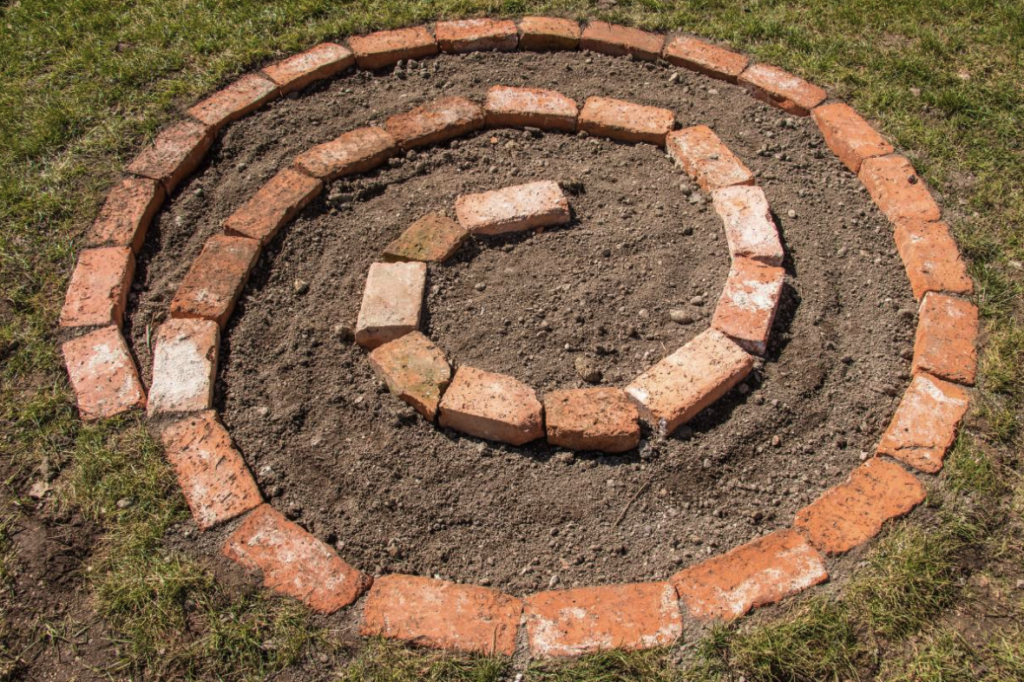
Step 2: Preparing Materials
You will need:
- Stones or bricks to create the spiral walls
- Good soil and compost
- Seeds or herb seedlings
By the way, I highly recommend this soil sifter with a vibration motor. It saves me a ton of time every time I work with soil.
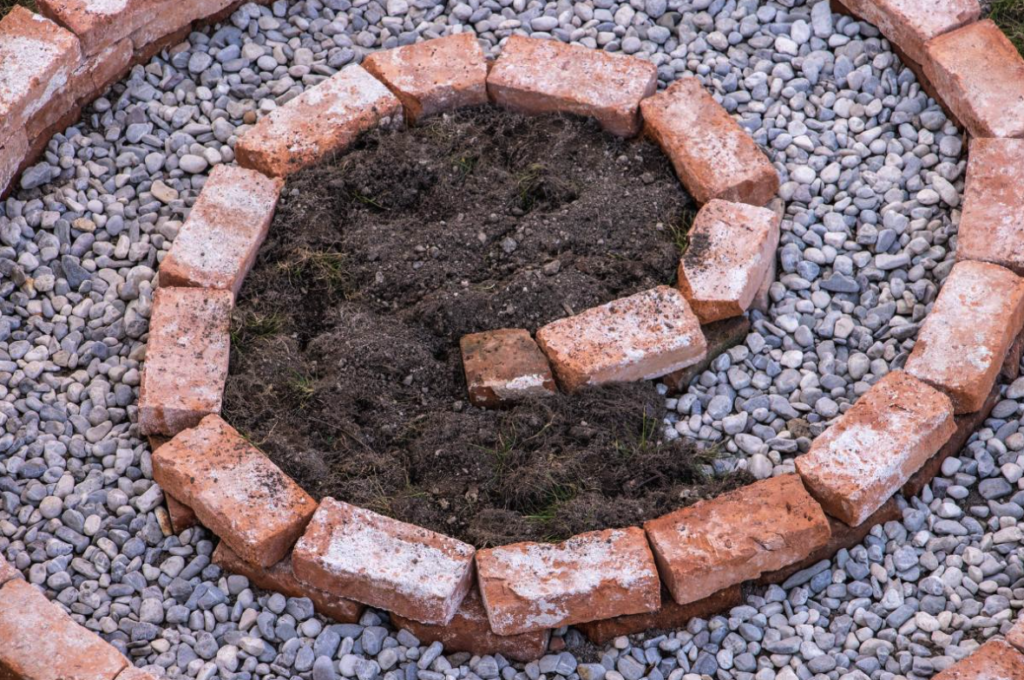
Step 3: Building the Spiral
- First, determine the center of your garden and start laying stones in a circle, gradually increasing the diameter.
- Continue laying stones, forming a spiral that rises towards the center.
- Fill the spiral with soil and compost, providing good conditions for plant growth.

Step 4: Planting the Herbs
Place the plants according to their sun and moisture requirements:
- Upper layers of the spiral are suitable for sun-loving plants like rosemary and thyme.
- Middle layers can be planted with basil and oregano.
- Lower layers are ideal for moisture-loving plants like mint and parsley.

Images are taken from theseedcollection.com.au
Inspirational Examples
I’ve compiled a selection of spiral gardens that will surely inspire you to head to the nearest garden store and get everything you need to create your own garden.


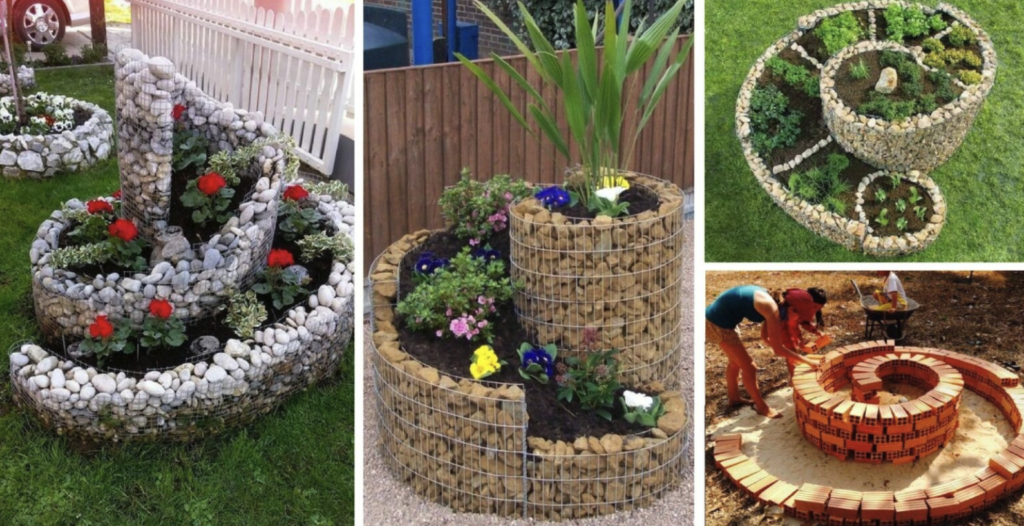
Taking Care of the Spiral Garden: Easy or Difficult?
Fortunately, maintaining a permaculture spiral herb garden is not particularly demanding. Water the plants as needed and remove weeds. Over time, the plants will grow and require minimal attention. Here are a few tips that helped me:
- Regular Watering: Keep in mind that the upper layers dry out faster than the lower ones.
- Mulching: This helps retain moisture and prevent weed growth.
- Removing Wilted Leaves: This helps keep plants healthy and prevents the spread of disease.
- Checking for Pests: Regularly inspect plants and take action at the first sign of infestation.
It’s important to remember: over time, you might want to add new spirals to your garden, so be sure to plan for expansion in advance.
Requirements for Various Herbs
The table below provides the light, water, and fertilization requirements for various herbs that can be planted in a spiral garden:
| Herb | Light Requirements | Water Requirements | Fertilizers | Notes |
|---|---|---|---|---|
| Rosemary | Full sun | Low | Compost, once a year | Grows well in poor soils |
| Thyme | Full sun | Low | Compost, once a year | Requires good drainage |
| Basil | Partial shade | Medium | Organic fertilizers | Prefers rich, moist soil |
| Oregano | Partial shade | Medium | Compost, once a year | Can grow in poor soils |
| Mint | Partial shade | High | Organic fertilizers | Spreads quickly, needs control |
| Parsley | Partial shade | High | Compost, once a year | Prefers rich soil |
I can recommend this NatureZ Edge Seed Variety Pack, which includes all the herbs listed in the table. You can order from 5 to 15 different herbs, and the price… that’s a particularly nice reason to check it out 🙂
Not-so-Obvious Tips for Growing a Spiral Garden
Regardless of your gardening experience, you understand what permaculture growing entails. You know what it takes and how challenging it can be at times. I want to share some of my observations that have helped me grow a decent garden over these two years.
Use Vertical Composting
Place a small compost bin at the center of your spiral. It will not only serve as a source of nutrients for your plants but also create an additional microclimate. Decomposing organic matter generates heat, which will be beneficial for plants during the colder months. Compost also attracts beneficial worms and microorganisms that improve the soil.
Integrate Drip Irrigation
Drip irrigation is an excellent way to ensure even watering of plants, especially in spiral gardens where the upper layers can dry out faster than the lower ones. Install a drip irrigation system along the entire spiral so that water reaches the roots of the plants directly. This not only conserves water but also prevents diseases associated with leaf overwatering.
Plant Companion Plants
Companion plants help each other grow by repelling pests and improving nutrient conditions. For example, basil can be planted next to tomatoes to repel aphids, and marigold will protect herbs from nematodes. In a spiral garden, you can easily place companion plants next to each other thanks to the multi-tiered structure.
Consider Wind Direction
When planning and building your spiral garden, take into account the prevailing wind direction in your area. Tall plants placed on the upper levels of the spiral can serve as a wind barrier, protecting more delicate plants below. This is especially important in windy areas where strong winds can damage plants or dry out the soil.
I wish you success and don’t forget to share your results in the comments!
P.S. This article contains links to products on Amazon, for which I may receive a commission if you make a purchase. All recommendations are based on my own experience, and the inclusion of these links in the article does not influence my opinion in any way.
